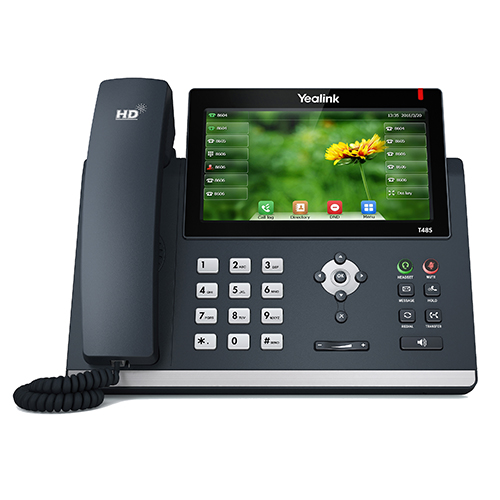VoIP hasn’t always been the easy-to-manage and reliable business service that it is today. At one point, business VoIP was plagued with problems that resulted from low bandwidth, inadequate routers and improper network configuration. These problems ranged from jitter to dropped calls.
Over the past four decades, VoIP has evolved from an experiment to the most common type of new business phone system implementation.
Just as Salesforce has brought enterprise-level CRM functionality to small and midsized business, VoIP has brought enterprise-level telephone system features to SMBs.
Before VoIP, small business phone systems had feature sets that were frozen in firmware. The systems were subject to hardware obsolescence. This has all changed with VoIP.
The 1970s: ARPANET and Day Sailing
Phone service over a computer network arguably first appeared in 1978, before the internet even existed.
A system developed at the USC Information Sciences Institute was the forerunner of today’s Voice over IP (VoIP). The system ran on ARPANET.
This video is a demonstration of the birth of packetized voice conferencing. The video shows internet application pioneer Danny Cohen running from his sailboat to a phone both to make the conference call.
The 1990s: VocalTec and Asterisk
While not a business product, VoIP as we know it today started with a company called VocalTec.
VocalTec released the first ever Internet VoIP application in February 1995. The product was named InternetPhone.
There was no physical telephone involved. Physical phones came later.
In 1999, the Session Initiation Protocol (SIP) specification RFC 2543 was released. SIP went on to become the leading protocol for VoIP. Many of today’s VoIP phones contain the SIP acronym in their model numbers.
On the business front, Asterisk, the source code for the first software driven PBX, was released late in the decade. Asterisk continues to thrive in the developer community.
While Asterisk represented a huge leap forward in business telephone technology, the controlling hardware was a physical server within a company’s four walls. The next decade saw the transition to the idea of a virtual PBX.
The 2000s: Pivots and Explosive Growth
The 2000s were the decade in which the idea of hosted business VoIP took root and then took off. When a small business moved to hosted VoIP, there was no longer a phone system to be found in the office. Other than for a fax line and/or an alarm system, no copper telephone wire had to be run into the office. Each employee’s VoIP phone effectively connected straight through to a cloud service provider’s facilities.
SunRocket was a hosted VoIP provider that was established in early 2004. Unfortunately for its 200,000 customers and its employees, SunRocket flared out and ceased operations in July 2007. Its customers were picked up by a company that was then known as Packet8.
During the 2000s, several telecommunications software companies pivoted their business model to hosted VoIP. New VoIP companies were born. Many of them still exist today as international VoIP vendors.
The 2010s: Barriers to VoIP Industry Entry Reduced
In 2011 Marc Andreessen famously declared, “software is eating the world.” Software was also reducing barriers to entry in many industries, including telecommunications.
With the availability of Unified Communications as a Service (UCaaS) software and universal SIP phones from companies such as Polycom and Yealink, the 2010s allowed regional providers like Fortis to enter and thrive in the business VoIP market.
Today, businesses have the choice between buying from a large, international provider or buying from a business that locally manages the service and provides on-site implementation and training.
It’s now possible to support the local economy and get world class business VoIP service.
Where is Business VoIP Headed?
Unified Communications (UC) used to be an industry insider buzzword. It has become a more appreciated label for the end user business telecommunications experience.
While the physical desk phone will be here for years to come, there will continue to be a shift toward greater use of mobile VoIP apps and desktop soft phones.
Video is becoming more integrated into devices and communication channels. Telemedicine is a harbinger application for video.
Integrations with business productivity tools such as Google Workspace and CRM systems such as Salesforce will become more common and available.


